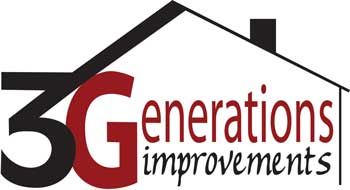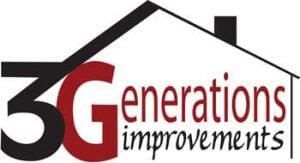When it comes to choosing siding for your home or building project, there are many products available. Traditional wood siding, composite wood products and even vinyl siding are popular choices. But probably the best choice for most every residential siding need is James Hardie fiber cement siding, commonly known as Hardie Board.
All About Hardie Board
The fiber cement siding product known as Hardie Board is manufactured by James Hardie Building Products which is one of the first and most successful manufacturers of this type of siding material.
James Hardie Building Products can trace its roots to 1888, when the young James Hardie left his family´s tannery business in Scotland and immigrated to Melbourne, Australia. As an enterprising young man in search of new opportunities, he capitalized on his tannery experience and started a business importing oils and animal hide tanning products.
According to the James Hardie website,
In the mid-1980s, James Hardie pioneered the development of fiber-cement technology, and began designing and manufacturing a wide range of fiber-cement building products that made use of the benefits that came from the product´s durability, versatility and strength.
Using the technical and manufacturing expertise it developed in Australia, James Hardie Inc. expanded its operations to become a world-leading, specialized, high-technology manufacturer of a wide range of fiber-cement building materials.
James Hardie Inc. is solely a fiber-cement business today and is active in global markets with manufacturing operations in the North America, Australia, New Zealand and the Philippines.
Hardie Board Products
Two of the most popular fiber cement products from James Hardie are products are known as HardiePlank®, a horizontal lap siding, and a vertical siding called HardiePanel®. The fiber cement siding products are created from a unique formula of Portland cement mixed with ground sand, cellulose fiber, and other additives. Because of its popularity it has become an almost generic product also known as concrete siding, cement fiber siding, and even fiber cement cladding.
James Hardie fiber cement siding is textured in a variety of finishes which can resemble stucco, wood clapboards, and even cedar shingles. The manufacturing process involves using pulverized sand, cement, and wood pulp, which are then mixed with water to make a slurry. This mixture is then rolled out and pressed together into sheets.
As the water is squeezed out during the pressing process, a textured pattern is imprinted onto the surface of the sheets, which are then cut into boards. These pressed boards are then baked under high pressure steam, separated, strength tested, and finally painted.
While the boards may resemble wood, they are much heavier and have several properties more like cement than with wood. However, the wood fiber that is added gives the board the flexibility required to prevent cracking.
The result is a material that is far more durable than most wood or stucco, is highly resistant to insects and rot, and is also fire resistant. These qualities have caused the fiber cement siding to become a vastly popular product since it requires little maintenance, will not melt, is non-combustible, and offers a natural, wood-like appearance.
What You Need to Know About Hardie Board
Hardie Board is not the same product as “hardboard,” which is a dense and thin pressed particleboard typically made from wood. Also, Hardie Board is often misspelled, typically. Common misspellings include hardyboard, hardiboard, hardyplank, and hardypanel among others.
Hardie Board is more expensive than vinyl but can be considerably less expensive than wood siding products. For example, fiber cement board is typically less expensive than cedar wood or brick. Also, Hardie Board is usually equal to or less expensive than composite siding and less expensive than synthetic stucco products.
There are several great benefits to using Hardie Board. It is a versatile product that is long-lasting, affordable and is available in a wide variety of textures and colors. Here is a short list of some of the features that make Hardie Board siding such a great choice:
- Appearance: Textured finishes can simulate wood lap boards, wood shake siding, and cedar shingles. Color options are numerous and come with a 15-year warranty on the finish.
- Fire Resistance: Hardie Board is 90 percent sand and cement making it highly fire-resistant. In fact, James Hardie siding will not ignite when exposed to a direct flame, nor will it contribute fuel to a fire.
- Weather Resistance: This means long periods of high heat, winter storms, and deep freezes. It can withstand a summer hailstorm without sustaining damage.
- Longevity: Most Hardie Board products offer a 30-year, limited transferable warranty, though the product can be expected to last far longer when properly maintained.
There are a few points to keep in mind when choosing to use Hardie Board siding products. The material is not light-weight, is much harder than wood or vinyl, and is not completely maintenance-free. Here are some characteristics to consider before opting for fiber cement board:
- Workability: The same qualities that make this product so durable also require a bit more effort to cut. Working with Hardie Board siding means managing the materials hardness and the dust generated when cutting or shaping.
- Installation and Labor: Hardie Board siding can require more labor for installation. Typically, it takes longer to install than other siding due to its composition. For example, it weighs about 300 pounds per 100 square feet compared to 60-70 pounds for the same amount of vinyl siding.
- Maintenance: Bare siding that is painted after installation does have to be re-painted periodically. Their ColorPlus ® Technology Warranty covers paint and labor for any peeling and chipping of their pre-finished products for only 15 years. James Hardie siding should be washed every 6 to 12 months with a garden hose.
Overall, choosing James Hardie fiber cement products is a win-win for everyone involved in the building process. A quick overview of benefits and features includes:
- #1 rated return on your investment in Cost vs. Value report for 4 years in a row
- Impervious to wood-boring insects
- Resists damaging effects of salt spray and UV rays
- Does not rot and resists everyday bumps and harmful impacts
- Pre-painted options available that come with a 15-year paint warranty
- A green product
- Deeper, more authentic wood grain

